Last month I was just stunned by the display of the bright yellow flowers of Showy Podolepis P. jaceoides in the Angair garden, as I have seen very few specimens in the wild.

Showy Podolepsis
We can thank Bill and his propagation group for these, and Philippa for her careful nurture. Let’s hope they ‘linger longer’. Also during November much of our heathlands appeared white due to the massed flowering of our two main Teatrees Leptospermums, Prickly L.continentale, and Silky L. myrsinoides. If you are unsure which is which try the feel test, followed by a close look at the leaves.
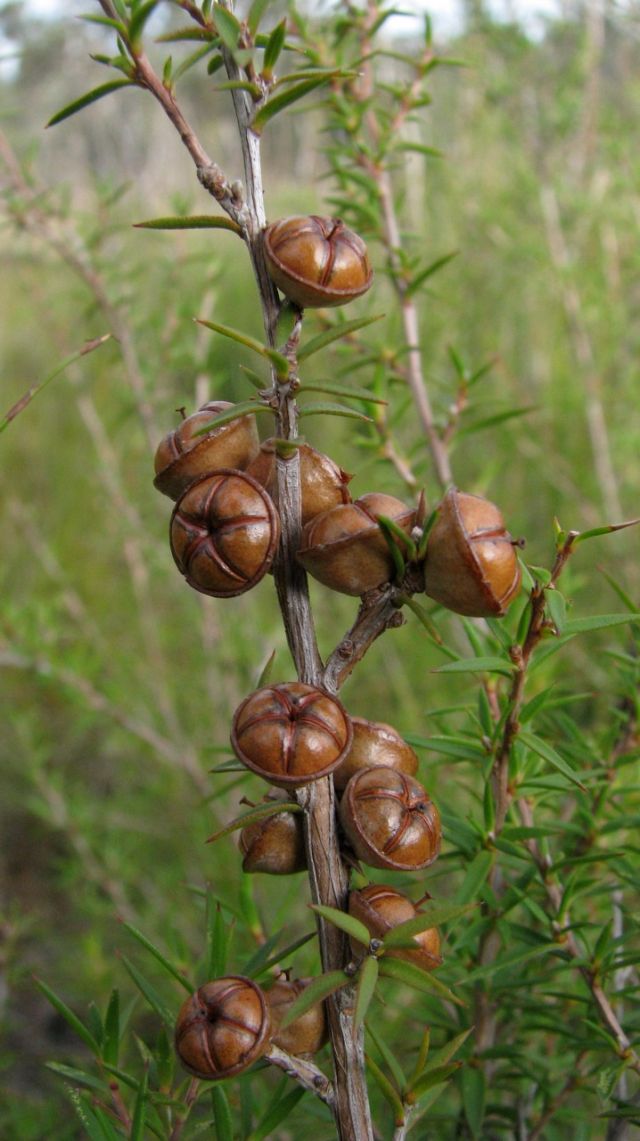
Prickly Teatree
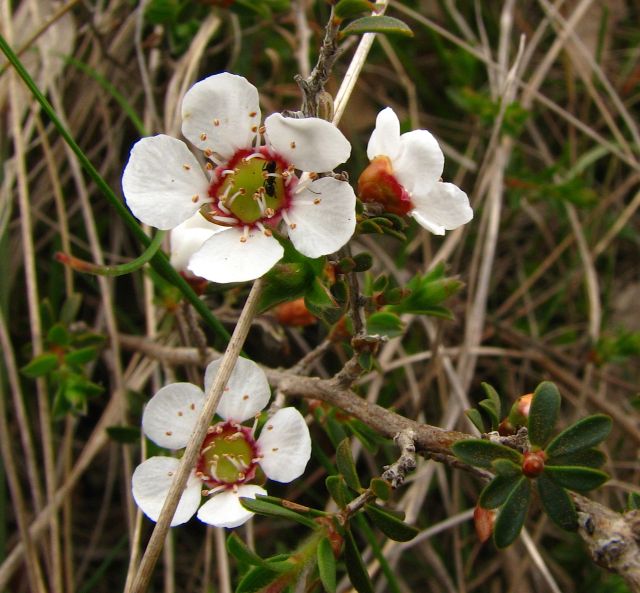
Silky Teatree
As we discovered in the Microscope Group (the MG’s!), the ovate leaves of the Prickly are wider near the base, whereas the Silky leaves are oblanceolate (wider near the tip). Their five-petalled flowers are now producing distinctive five-lobed seedpods.

Prickly Teatree seedpods
Many other plants are also developing seedpods at this time of year, especially the wattles. They can form quite a carpet on the ground, providing an important source of food and habitat for many small creatures such as moths.
Along the coast check out Sea-box Alyxia buxifolia for its unusual small, white, propeller-like flowers. These are followed by showy orange-red berries.
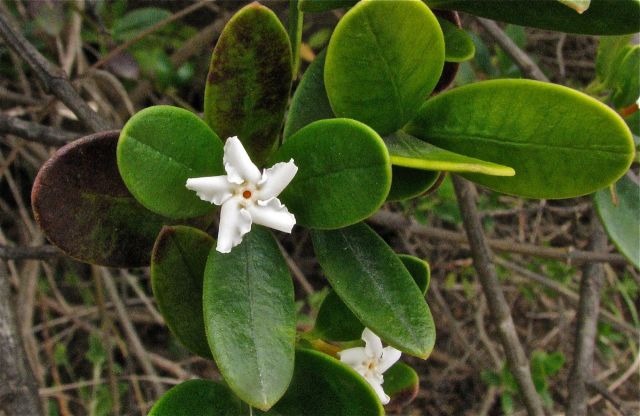
Sea-box
Also Seaberry Saltbush Rhagodia candolleana ssp. candolleana is developing terminal dense clusters of tiny green unisexual flowers, which will be followed by luscious soft burgundy fruit.
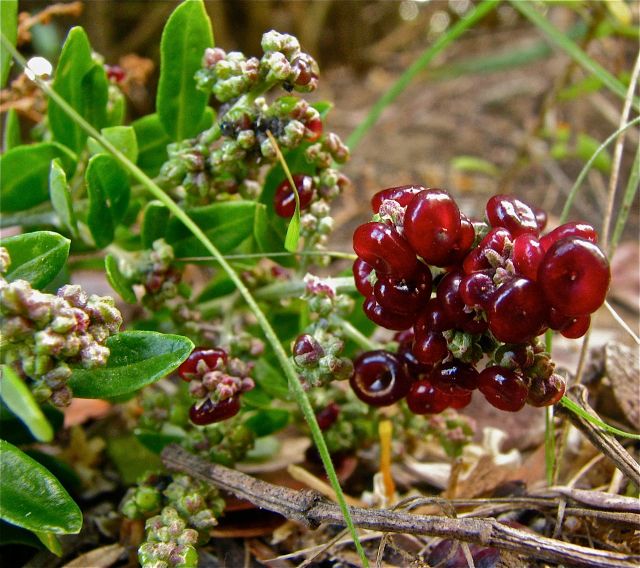
Seaberry Saltbush
On the ground the prostrate Small-fruit Fan-flower Scaevola albida has been flowering prolifically with its distinctive white to blue fan-shaped flowers, which may continue into summer.

Small-fruit Fan-flower
Summer is a time when so many of our plants hunker down waiting for the heat to finish, but there are a surprising number of bushes and trees that seem to thrive in the harsh conditions. A range of daisy-bushes, Olearias, with similar looking flowers but of varying heights, can be seen. These include Twiggy Daisy-bush O. ramulosa var ramulosa and O.myrsinoides Silky Daisy-bush.

Twiggy Daisy-bush
You should have no trouble seeing the common Sweet Bursaria Bursaria spinosa ssp. spinosa with its clusters of creamy, star-like flowers. Its sweet fragrance and nectar attract masses of insects, especially bees and butterflies. The butterfly known as Bright Copper Paralucia aurifer, which I worked on for the Angair mosaic, is particularly attracted to it, but I have never seen a living specimen…maybe this will be the year!

Sweet Bursaria
Our own ‘seasonal’ tree the Victorian Christmas Bush Prostanthera lasianthos var. lasianthsos, with its distinctive white flowers, can be found in wetter forested areas.
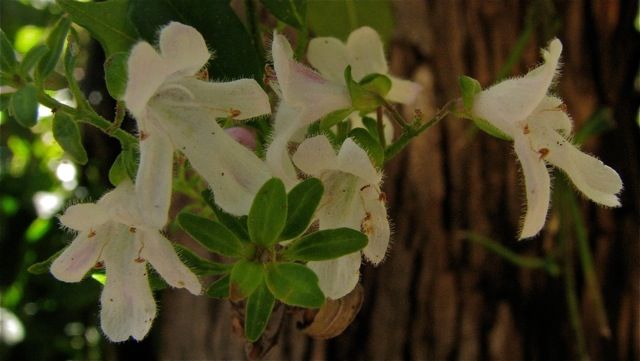
Victorian Christmas Bush
There are also a number of low-growing plants to look out for. Our Bluebells Wahlenbergias are always a pleasure to find, with their small five- petalled flowers dancing on their long, fine stems.

Bluebell
If you look carefully you may also see the tiny single flowers of the Bottle-daisies Lagenophera, Slender L.gracilis and Blue L.stipitata growing from much larger rosettes.
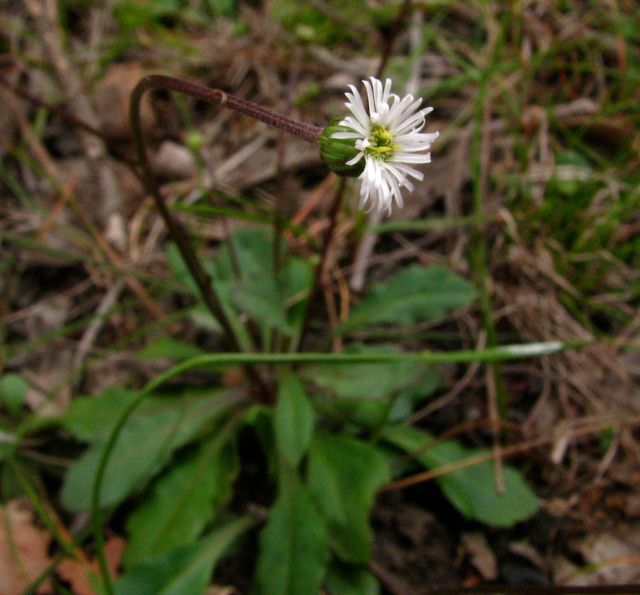
Bottle-daisy
Finally check out the less colourful flowers on our grasses, sedges and rushes, as they are at their peak at this time of year. Sizes vary from the small Wattle Mat-rush Lomandra filiformis subsp. filiformis to the tall dense tussocks of Spiny-headed Mat-rush Lomandra longifolia subsp. longifolia. I still find it a challenge to determine whether the plants are male or female.
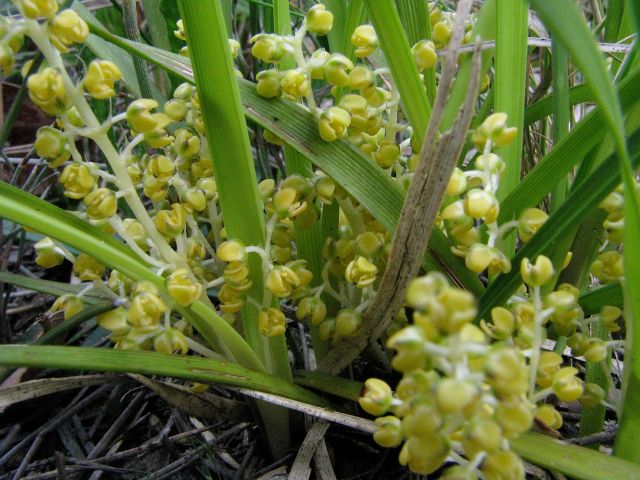
Wattle Mat-rush

Spiny-headed Mat-rush
Be sure to take your Flowers of Anglesea and Aireys Inlet on your summer walks to help you identify some of these often confusing plants.
Ellinor Campbell